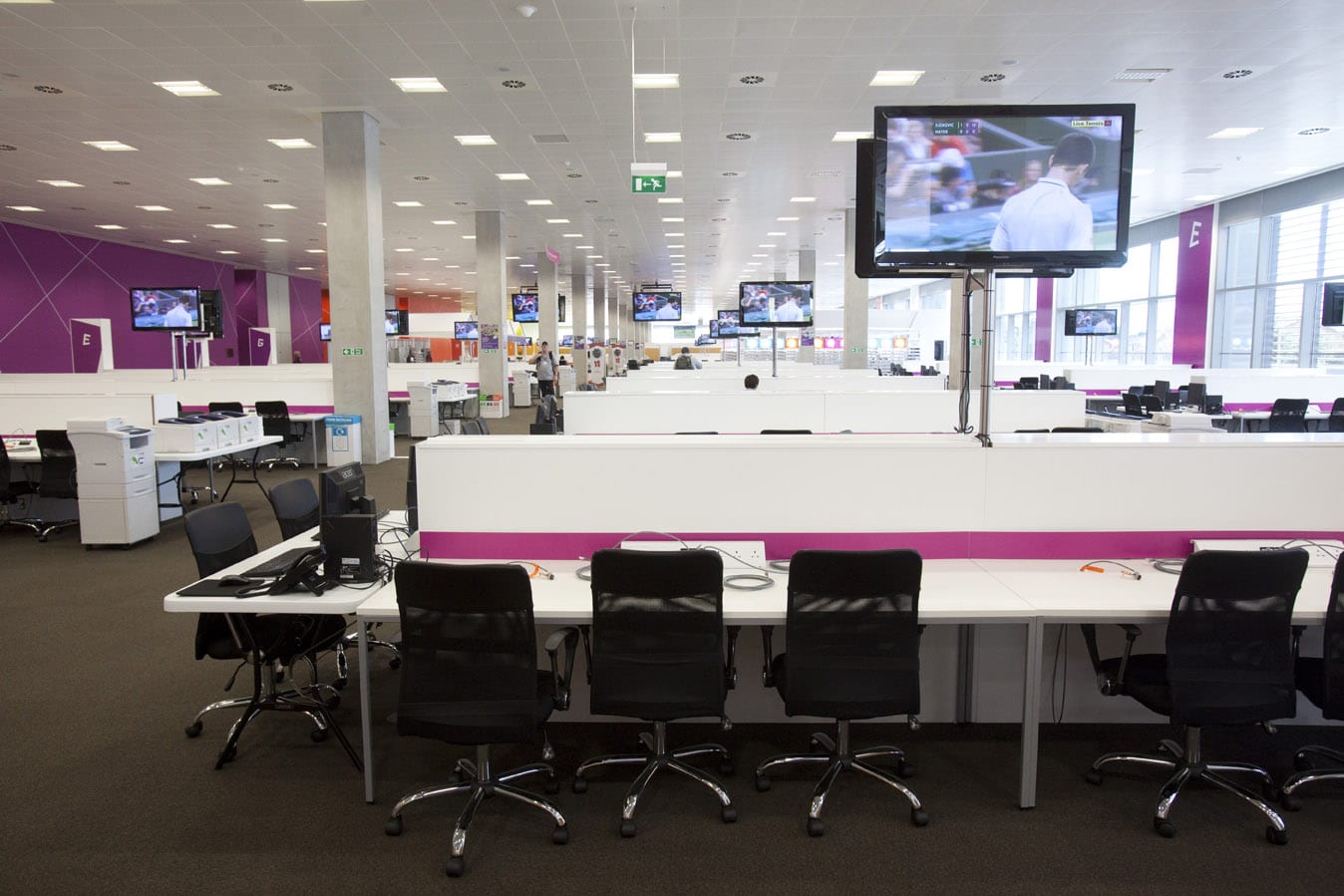Ceiling tiles from Armstrong*1 helped to play a part in the communication of the London 2012 Games to the world, in more ways than one.
 Some 35,000m² of Armstrong’s Academy Merit mineral tiles were used throughout the Main Press Centre (MPC), one of the two main elements of the most digitally connected building in Europe – the London 2012 Media Centre in the Olympic Park.
Some 35,000m² of Armstrong’s Academy Merit mineral tiles were used throughout the Main Press Centre (MPC), one of the two main elements of the most digitally connected building in Europe – the London 2012 Media Centre in the Olympic Park.
These were complemented in the neighbouring International Broadcast Centre (IBC) by 5,760m² of the S-Clip F and 2,000m² of the T-Clip F metal Clip-In system in the basement and various office floors and 400m² of the DH-700 metal raft system in the corridors.
The tiles were supplied by SIG Interiors, then installed late 2011 and early 2012 and dismantled relatively shortly after the end of the London 2012 Games, by specialist sub-contractors Platt & Reilly for main contractor Carillion.
But the mineral tiles were only in place for a few weeks, becoming part of Armstrong’s End-Of-Life (EOL) recycling scheme when the £15million four-storey temporary building on the site of the former Hackney Wick Stadium was demolished to make way for a new 300,000m² technology hub, with the existing two-storey IBC as the anchor.
The Academy Merit tiles with a Board edge detail on a 24mm grid already contain more than 50% recycled content but were transported back to Armstrong’s state-of-the-art production facility in Gateshead for further recycling. With 85% light reflectance and Class C acoustic performance, they will have helped to optimise natural light and intelligibility.
The 35,000m2 of Academy Merit tiles recycled equates to 96 tonnes diverted from landfill or 73 tonnes of CO2 saved, about the same as driving a car 400,000Km. And with prices at around £150 per skip, that will have saved at least £15,000 in site waste disposal costs.
Designed by Allies and Morrison at almost 300 metres long, it contained a catering village turning out 60,000 meals a day and a multi-storey car park linking the MPC with the IBC. The new technology hub will host media centres, a university research centre, digital academy and new business incubator.
Armstrong’s ceiling recycling schemes were launched in the UK in 2003, starting with the End-Of-Life (EOL) scheme, then in 2010 with an Off-Cut (OCR) scheme. In the 10 years since then both schemes have recycled more than 500 tonnes that would have gone to landfill. Globally, this figure reaches 11.5 million m².
The Armstrong EOL scheme now applies to any quantity of all wet felt, stone wool and glass wool ceiling tiles where they are replaced by Armstrong tiles, with full loads of the old tiles transported back free of charge*2 to Armstrong’s factory where they are made into new tiles – a service unique to Armstrong.
In 2012 alone, Armstrong’s recycling schemes recycled almost 300 tonnes in the UK, on projects including Pitney Bowes offices, the Southern General Hospital in Glasgow, and Horse Guards Parade in Whitehall, London – the high-profile temporary sporting venue for London 2012 beach volleyball. Previous projects include Salford Hospital, Birmingham University Hospital, and another temporary structure – the corporate hospitality chalets – at Farnborough Air Show.


